Chengqi Deng
DeepSeek-V3 Technical Report
Dec 27, 2024



Abstract:We present DeepSeek-V3, a strong Mixture-of-Experts (MoE) language model with 671B total parameters with 37B activated for each token. To achieve efficient inference and cost-effective training, DeepSeek-V3 adopts Multi-head Latent Attention (MLA) and DeepSeekMoE architectures, which were thoroughly validated in DeepSeek-V2. Furthermore, DeepSeek-V3 pioneers an auxiliary-loss-free strategy for load balancing and sets a multi-token prediction training objective for stronger performance. We pre-train DeepSeek-V3 on 14.8 trillion diverse and high-quality tokens, followed by Supervised Fine-Tuning and Reinforcement Learning stages to fully harness its capabilities. Comprehensive evaluations reveal that DeepSeek-V3 outperforms other open-source models and achieves performance comparable to leading closed-source models. Despite its excellent performance, DeepSeek-V3 requires only 2.788M H800 GPU hours for its full training. In addition, its training process is remarkably stable. Throughout the entire training process, we did not experience any irrecoverable loss spikes or perform any rollbacks. The model checkpoints are available at https://github.com/deepseek-ai/DeepSeek-V3.
Fire-Flyer AI-HPC: A Cost-Effective Software-Hardware Co-Design for Deep Learning
Aug 26, 2024



Abstract:The rapid progress in Deep Learning (DL) and Large Language Models (LLMs) has exponentially increased demands of computational power and bandwidth. This, combined with the high costs of faster computing chips and interconnects, has significantly inflated High Performance Computing (HPC) construction costs. To address these challenges, we introduce the Fire-Flyer AI-HPC architecture, a synergistic hardware-software co-design framework and its best practices. For DL training, we deployed the Fire-Flyer 2 with 10,000 PCIe A100 GPUs, achieved performance approximating the DGX-A100 while reducing costs by half and energy consumption by 40%. We specifically engineered HFReduce to accelerate allreduce communication and implemented numerous measures to keep our Computation-Storage Integrated Network congestion-free. Through our software stack, including HaiScale, 3FS, and HAI-Platform, we achieved substantial scalability by overlapping computation and communication. Our system-oriented experience from DL training provides valuable insights to drive future advancements in AI-HPC.
DeepSeek-Coder-V2: Breaking the Barrier of Closed-Source Models in Code Intelligence
Jun 17, 2024



Abstract:We present DeepSeek-Coder-V2, an open-source Mixture-of-Experts (MoE) code language model that achieves performance comparable to GPT4-Turbo in code-specific tasks. Specifically, DeepSeek-Coder-V2 is further pre-trained from an intermediate checkpoint of DeepSeek-V2 with additional 6 trillion tokens. Through this continued pre-training, DeepSeek-Coder-V2 substantially enhances the coding and mathematical reasoning capabilities of DeepSeek-V2, while maintaining comparable performance in general language tasks. Compared to DeepSeek-Coder-33B, DeepSeek-Coder-V2 demonstrates significant advancements in various aspects of code-related tasks, as well as reasoning and general capabilities. Additionally, DeepSeek-Coder-V2 expands its support for programming languages from 86 to 338, while extending the context length from 16K to 128K. In standard benchmark evaluations, DeepSeek-Coder-V2 achieves superior performance compared to closed-source models such as GPT4-Turbo, Claude 3 Opus, and Gemini 1.5 Pro in coding and math benchmarks.
DeepSeek-VL: Towards Real-World Vision-Language Understanding
Mar 11, 2024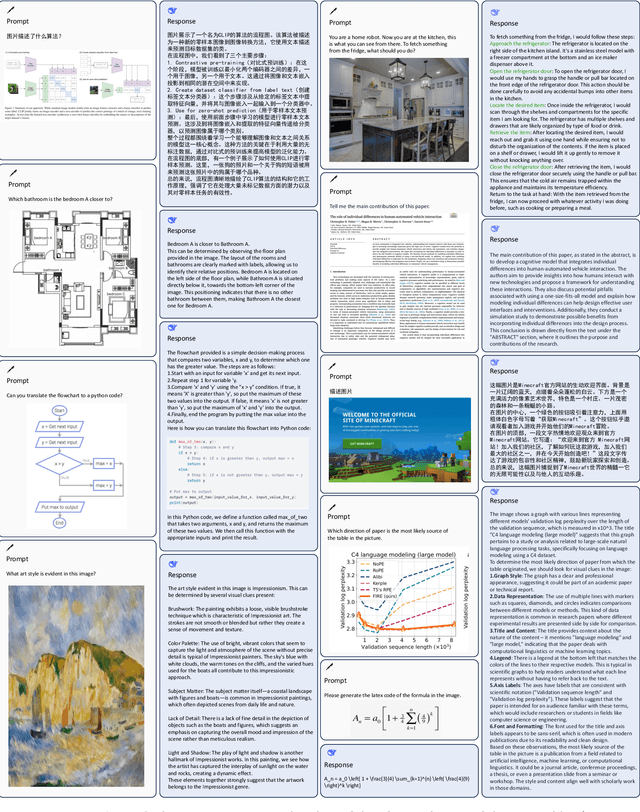
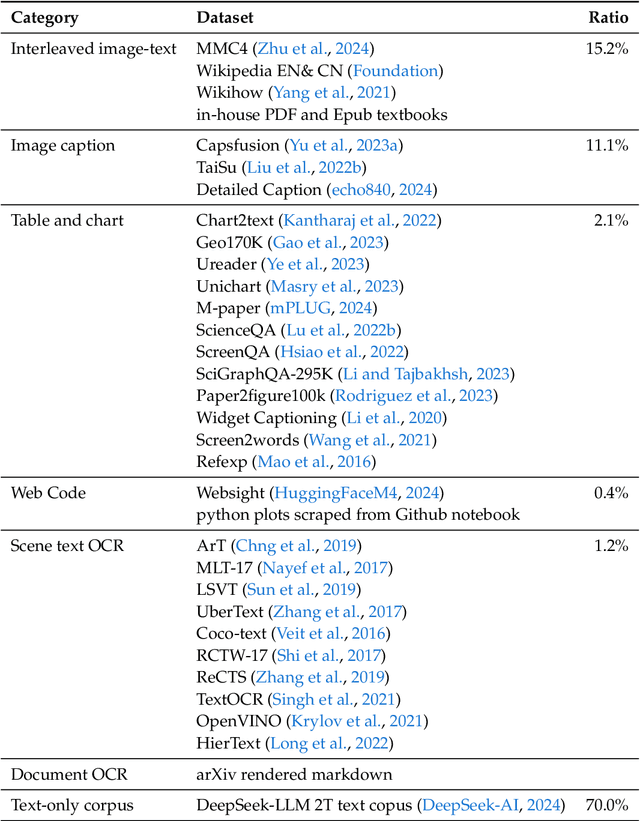
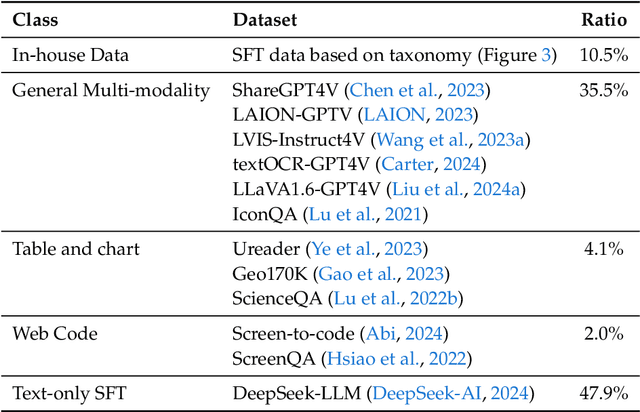
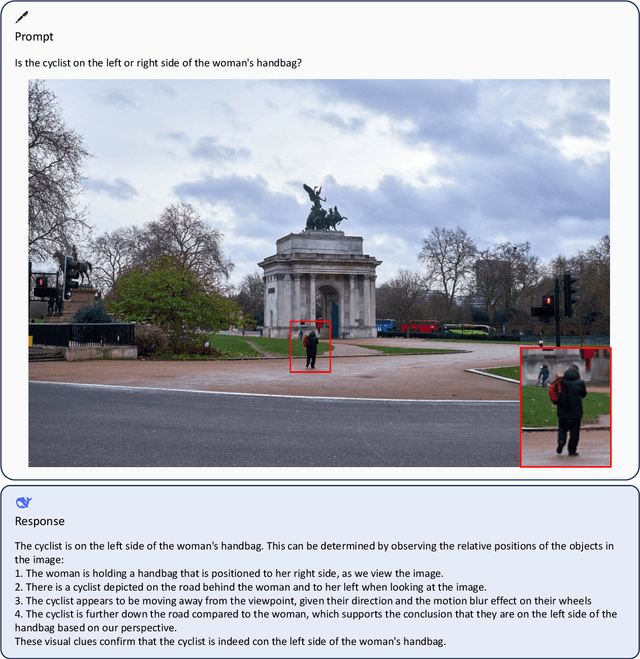
Abstract:We present DeepSeek-VL, an open-source Vision-Language (VL) Model designed for real-world vision and language understanding applications. Our approach is structured around three key dimensions: We strive to ensure our data is diverse, scalable, and extensively covers real-world scenarios including web screenshots, PDFs, OCR, charts, and knowledge-based content, aiming for a comprehensive representation of practical contexts. Further, we create a use case taxonomy from real user scenarios and construct an instruction tuning dataset accordingly. The fine-tuning with this dataset substantially improves the model's user experience in practical applications. Considering efficiency and the demands of most real-world scenarios, DeepSeek-VL incorporates a hybrid vision encoder that efficiently processes high-resolution images (1024 x 1024), while maintaining a relatively low computational overhead. This design choice ensures the model's ability to capture critical semantic and detailed information across various visual tasks. We posit that a proficient Vision-Language Model should, foremost, possess strong language abilities. To ensure the preservation of LLM capabilities during pretraining, we investigate an effective VL pretraining strategy by integrating LLM training from the beginning and carefully managing the competitive dynamics observed between vision and language modalities. The DeepSeek-VL family (both 1.3B and 7B models) showcases superior user experiences as a vision-language chatbot in real-world applications, achieving state-of-the-art or competitive performance across a wide range of visual-language benchmarks at the same model size while maintaining robust performance on language-centric benchmarks. We have made both 1.3B and 7B models publicly accessible to foster innovations based on this foundation model.
The Faiss library
Jan 16, 2024


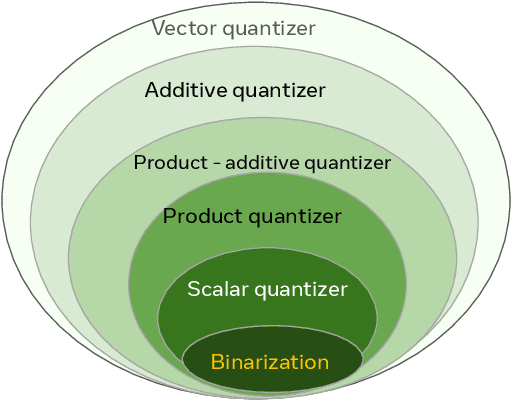
Abstract:Vector databases manage large collections of embedding vectors. As AI applications are growing rapidly, so are the number of embeddings that need to be stored and indexed. The Faiss library is dedicated to vector similarity search, a core functionality of vector databases. Faiss is a toolkit of indexing methods and related primitives used to search, cluster, compress and transform vectors. This paper first describes the tradeoff space of vector search, then the design principles of Faiss in terms of structure, approach to optimization and interfacing. We benchmark key features of the library and discuss a few selected applications to highlight its broad applicability.
DeepSeekMoE: Towards Ultimate Expert Specialization in Mixture-of-Experts Language Models
Jan 11, 2024



Abstract:In the era of large language models, Mixture-of-Experts (MoE) is a promising architecture for managing computational costs when scaling up model parameters. However, conventional MoE architectures like GShard, which activate the top-$K$ out of $N$ experts, face challenges in ensuring expert specialization, i.e. each expert acquires non-overlapping and focused knowledge. In response, we propose the DeepSeekMoE architecture towards ultimate expert specialization. It involves two principal strategies: (1) finely segmenting the experts into $mN$ ones and activating $mK$ from them, allowing for a more flexible combination of activated experts; (2) isolating $K_s$ experts as shared ones, aiming at capturing common knowledge and mitigating redundancy in routed experts. Starting from a modest scale with 2B parameters, we demonstrate that DeepSeekMoE 2B achieves comparable performance with GShard 2.9B, which has 1.5 times the expert parameters and computation. In addition, DeepSeekMoE 2B nearly approaches the performance of its dense counterpart with the same number of total parameters, which set the upper bound of MoE models. Subsequently, we scale up DeepSeekMoE to 16B parameters and show that it achieves comparable performance with LLaMA2 7B, with only about 40% of computations. Further, our preliminary efforts to scale up DeepSeekMoE to 145B parameters consistently validate its substantial advantages over the GShard architecture, and show its performance comparable with DeepSeek 67B, using only 28.5% (maybe even 18.2%) of computations.
DeepSeek LLM: Scaling Open-Source Language Models with Longtermism
Jan 05, 2024



Abstract:The rapid development of open-source large language models (LLMs) has been truly remarkable. However, the scaling law described in previous literature presents varying conclusions, which casts a dark cloud over scaling LLMs. We delve into the study of scaling laws and present our distinctive findings that facilitate scaling of large scale models in two commonly used open-source configurations, 7B and 67B. Guided by the scaling laws, we introduce DeepSeek LLM, a project dedicated to advancing open-source language models with a long-term perspective. To support the pre-training phase, we have developed a dataset that currently consists of 2 trillion tokens and is continuously expanding. We further conduct supervised fine-tuning (SFT) and Direct Preference Optimization (DPO) on DeepSeek LLM Base models, resulting in the creation of DeepSeek Chat models. Our evaluation results demonstrate that DeepSeek LLM 67B surpasses LLaMA-2 70B on various benchmarks, particularly in the domains of code, mathematics, and reasoning. Furthermore, open-ended evaluations reveal that DeepSeek LLM 67B Chat exhibits superior performance compared to GPT-3.5.
Sparse Fuse Dense: Towards High Quality 3D Detection with Depth Completion
Mar 18, 2022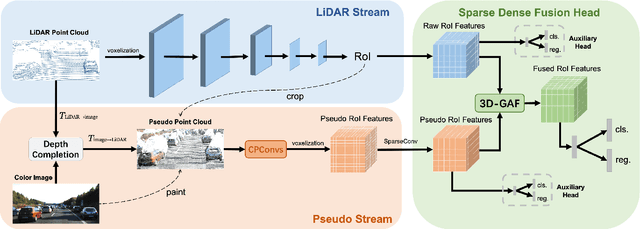
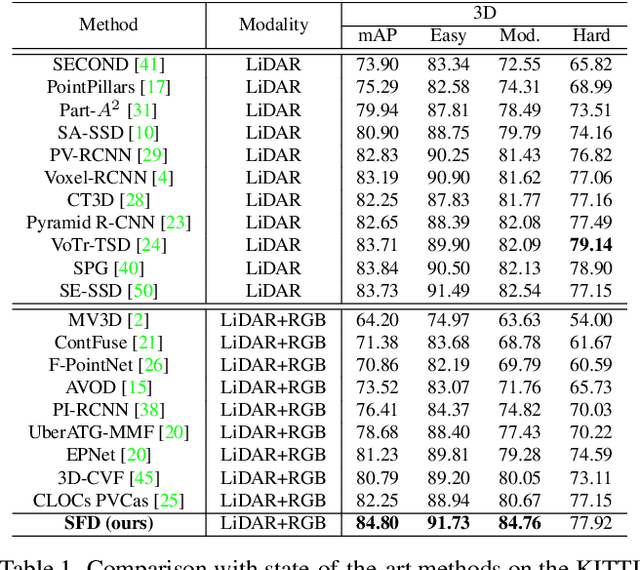
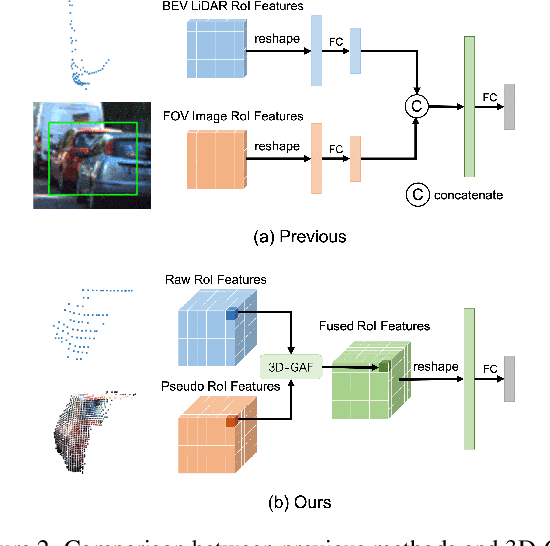
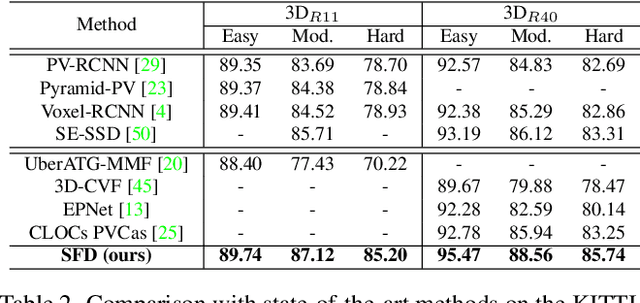
Abstract:Current LiDAR-only 3D detection methods inevitably suffer from the sparsity of point clouds. Many multi-modal methods are proposed to alleviate this issue, while different representations of images and point clouds make it difficult to fuse them, resulting in suboptimal performance. In this paper, we present a novel multi-modal framework SFD (Sparse Fuse Dense), which utilizes pseudo point clouds generated from depth completion to tackle the issues mentioned above. Different from prior works, we propose a new RoI fusion strategy 3D-GAF (3D Grid-wise Attentive Fusion) to make fuller use of information from different types of point clouds. Specifically, 3D-GAF fuses 3D RoI features from the couple of point clouds in a grid-wise attentive way, which is more fine-grained and more precise. In addition, we propose a SynAugment (Synchronized Augmentation) to enable our multi-modal framework to utilize all data augmentation approaches tailored to LiDAR-only methods. Lastly, we customize an effective and efficient feature extractor CPConv (Color Point Convolution) for pseudo point clouds. It can explore 2D image features and 3D geometric features of pseudo point clouds simultaneously. Our method holds the highest entry on the KITTI car 3D object detection leaderboard, demonstrating the effectiveness of our SFD. Code will be made publicly available.
PitchNet: Unsupervised Singing Voice Conversion with Pitch Adversarial Network
Dec 04, 2019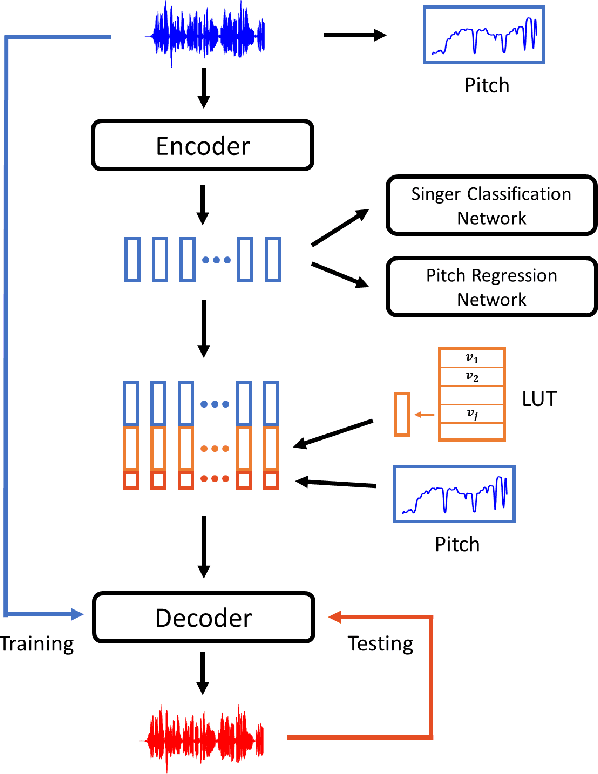
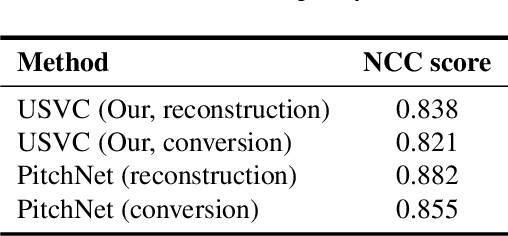
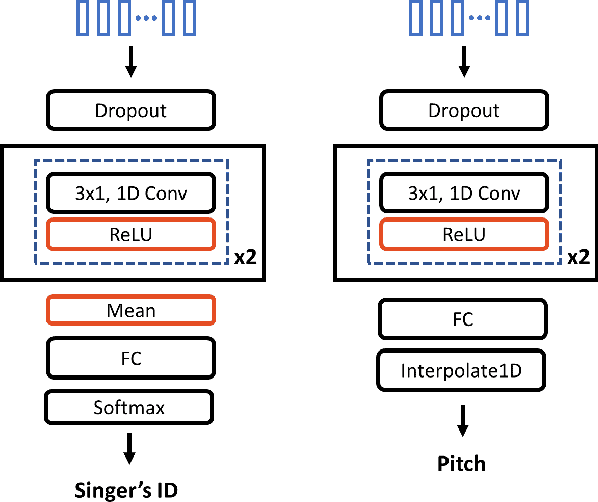

Abstract:Singing voice conversion is to convert a singer's voice to another one's voice without changing singing content. Recent work shows that unsupervised singing voice conversion can be achieved with an autoencoder-based approach [1]. However, the converted singing voice can be easily out of key, showing that the existing approach can not model the pitch information precisely. In this paper, we propose to advance the existing unsupervised singing voice conversion method proposed in [1] to achieve more accurate pitch translation and flexible pitch manipulation. Specifically, the proposed PitchNet added an adversarially trained pitch regression network to enforce the encoder network to learn pitch invariant phoneme representation, and a separate module to feed pitch extracted from the source audio to the decoder network. Our evaluation shows that the proposed method can greatly improve the quality of the converted singing voice (2.92 vs 3.75 in MOS). We also demonstrate that the pitch of converted singing can be easily controlled during generation by changing the levels of extracted pitch before passing it to the decoder network.
 Add to Chrome
Add to Chrome Add to Firefox
Add to Firefox Add to Edge
Add to Edge